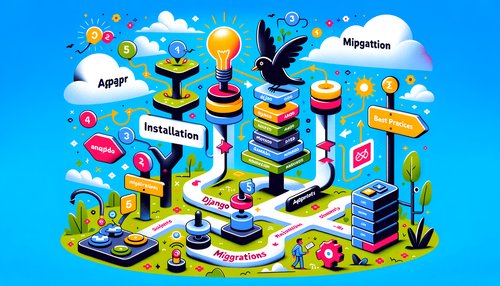Unlock the Magic of Django with Class-Based Views!
Django is a powerful web framework that enables developers to quickly create and deploy web applications. One of the most powerful features of Django is its class-based views. Class-based views allow developers to easily create powerful, dynamic webpages with minimal effort.
Class-based views provide a number of benefits over traditional views. For example, they provide a more organized, object-oriented approach to developing webpages. Additionally, they allow developers to quickly and easily create complex views with a few lines of code.
Let's take a look at how to create a simple class-based view in Django. We'll start by creating a view class in our views.py file.
from django.views.generic import View
class MyView(View):
def get(self, request):
# Add code for handling the GET request here
pass
This class will handle all GET requests for our view. We can now add a template for rendering our view. We'll add a template called my_view.html in the templates directory of our project.
<h1>My View</h1>
<p>This is my view!</p>
Finally, we'll add a URL pattern for our view in our urls.py file.
from django.urls import path
from .views import MyView
urlpatterns = [
path('my_view/', MyView.as_view(), name='my_view'),
]
Now, when a user visits our URL pattern, they will be served our view. This is just a brief example of how to use class-based views in Django. With a few lines of code, we can easily create powerful, dynamic webpages.
Class-based views are a great way to unlock the power of Django and create dynamic webpages with minimal effort. With class-based views, you can quickly create powerful webpages with just a few lines of code. Give it a try and see what you can create!
Recent Posts

Unlocking the Power of Terraform: Mastering Conditional Expressions for Smarter Infrastructure Automation

Unveiling the Future: Navigating the Public Interface of Apache Airflow for Streamlined Workflow Management
Apache Airflow
Mastering Workflow Automation: Unconventional Apache Airflow How-To Guides for the Modern Data Enthusiast
Apache Airflow
Mastering the Cloud: Unveiling AWS CloudFormation Best Practices for Seamless Infrastructure Management



